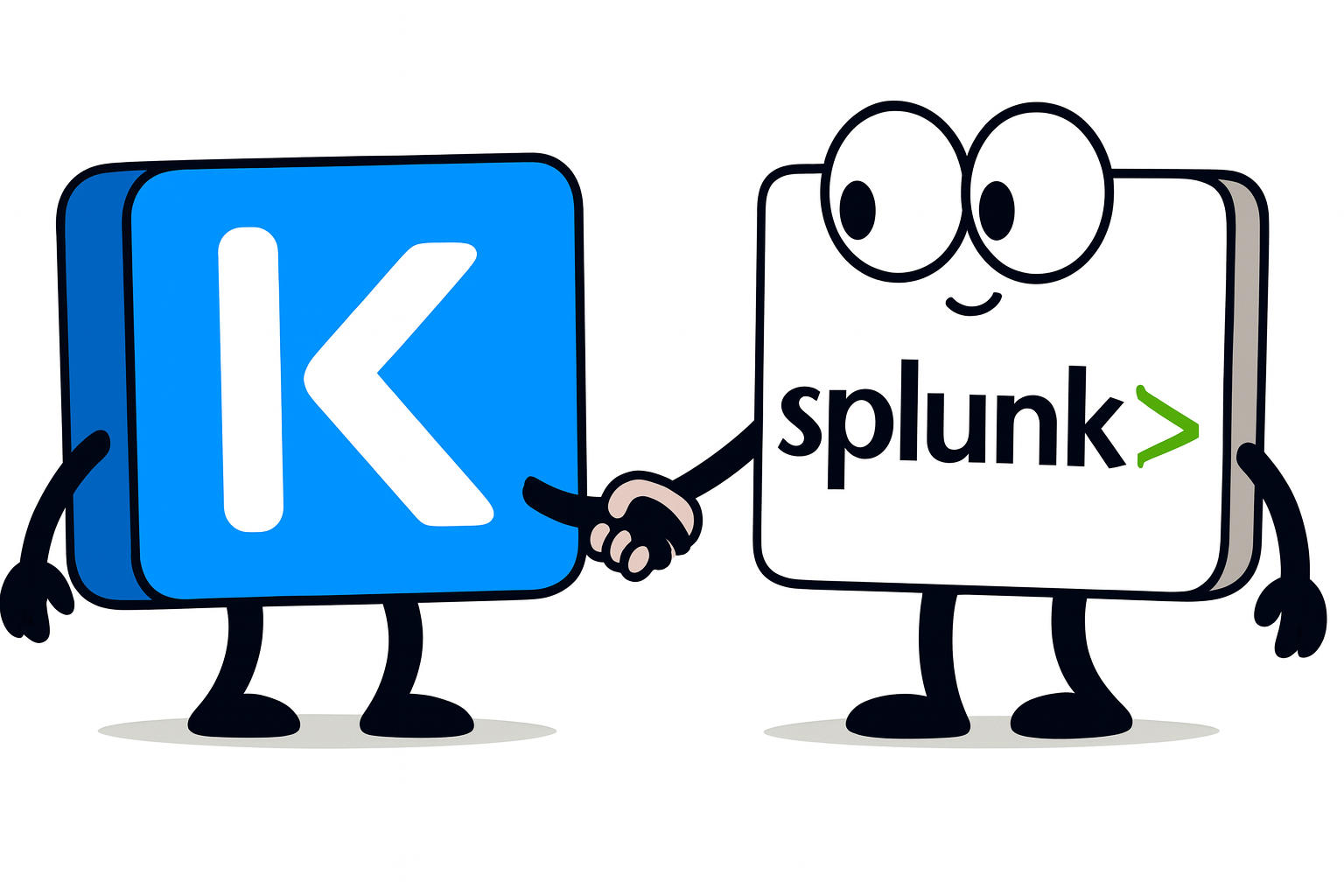Broadcom’s strategic pricing changes for VMware have sparked significant conversations within the tech community. With potential increases in licensing costs and the introduction of new pricing models, many organizations are now actively seeking alternatives. While customers are evaluating various options such as Proxmox, Hyper-V and Nutanix, one of the compelling alternative is KubeVirt.
What is KubeVirt?
KubeVirt is an extension of Kubernetes that enables users to run and manage virtual machines alongside containerized applications, providing a unified platform for both environments. Some of the key reasons why KubeVirt stands out as a visible alternatives are
- Unified Management - KubeVirt allows organizations to manage both virtual machines and containerized applications within a single Kubernetes environment
- Cost Efficiency - By leveraging existing Kubernetes infrastructure, KubeVirt can help organizations reduce costs associated with licensing and infrastructure management
- Cloud-Native Integration - As organizations increasingly adopt cloud-native technologies, KubeVirt enables seamless integration with other cloud-native tools and services within the Kubernetes ecosystem
- Vendor Independence - By using KubeVirt, organizations can avoid vendor lock-in associated with proprietary solutions like VMware.
- Support for Legacy Applications - KubeVirt provides a pathway to modernize legacy applications without having to completely re-architect legacy applications
- Future-Proofing - As the industry evolves towards cloud-native and containerized environments, adopting KubeVirt positions organizations to stay ahead of the curve and embrace emerging technologies and practices
any many more….
In this blog, I walk through the steps on how a virtual machine, running on VMware Infrastructure can be migrated to a Kubernetes clusters as KubeVirt VM using Forklift.
What is Forklift?
Forklift is an open-source tool designed to facilitate the migration of virtual machines (VMs) between various virtualization platforms and cloud providers, enabling organizations to move workloads seamlessly across different environments. The tool automates many aspects of the migration process, reducing the manual effort required and minimizing the risk of errors. This automation can include tasks such as converting VM formats, configuring network settings, and handling storage requirements and thus making it a good tool to migrate VMs from VMware to Kubernetes.
In my setup, I have the following
- Single node kubernetes cluster built using kubeadm
- Storage configured using hostpath-csi driver
- podman configured on the jump host connecting to the kubernetes cluster
- VMware ESXi 7.0.u2 with vSphere 7.0.3
- Centos9 Virtual machine with (16 GB disk)
kubectl get nodes
NAME STATUS ROLES AGE VERSION
k8s-cluster-centos.sbmlabs.net Ready control-plane 3d15h v1.31.7
kubectl get sc
NAME PROVISIONER RECLAIMPOLICY VOLUMEBINDINGMODE ALLOWVOLUMEEXPANSION AGE
csi-hostpath-sc (default) hostpath.csi.k8s.io Delete Immediate true 2d14h
Pre-Configuration
During my testing, I found that the KubeVirt and forklift pods fails with error
Failed to create an inotify watcher, too many open files
To resolve this error, I had to update the system configuration. Open the file /etc/sysctl.conf and add the following
fs.inotify.max_user_watches=999999
fs.inotify.max_user_instances=999999
fs.inotify.max_queued_events=999999
Apply the change by running sysctl -p
Edit the file /var/lib/kubelet/config.yaml and add the following
maxOpenFiles: 131070
failSwapOn: true
Reboot the node for the changes to effect.
Note: if you are running on a multi-node kubernetes cluster, the changes need to be applied on all nodes.
Install KubeVirt
Now that I have a kubernetes cluster with storage configured, the next step is to install KubeVirt.
export VERSION=$(curl -s https://storage.googleapis.com/KubeVirt-prow/release/KubeVirt/KubeVirt/stable.txt)
echo $VERSION
kubectl create -f "https://github.com/KubeVirt/KubeVirt/releases/download/${VERSION}/KubeVirt-operator.yaml"
kubectl create -f "https://github.com/KubeVirt/KubeVirt/releases/download/${VERSION}/KubeVirt-cr.yaml"
Verify if KubeVirt is successfully deployed. This will take a few mins for all pods to successfully deploy.
kubectl get KubeVirt.KubeVirt.io/KubeVirt -n KubeVirt -o=jsonpath="{.status.phase}"
Deployed
Install virtctl
virtctl is a command-line utility provided by KubeVirt. virtctl acts as a client tool to interact with KubeVirt resources, such as virtual machines, virtual machine instances (VMIs), and related components. It is similar to kubectl but provides additional commands specifically for managing virtual machines in a Kubernetes environment.
export VERSION=$(curl https://storage.googleapis.com/KubeVirt-prow/release/KubeVirt/KubeVirt/stable.txt)
sudo wget https://github.com/KubeVirt/KubeVirt/releases/download/${VERSION}/virtctl-${VERSION}-linux-amd64
sudo chmod +x virtctl-v1.5.0-linux-amd64
sudo mv virtctl-v1.5.0-linux-amd64 /usr/local/bin/virtctl
Install Operator Lifecycle Manager
The Operator Lifecycle Manager (OLM) is a component of the Kubernetes ecosystem that helps manage the lifecycle of Kubernetes Operators. It is part of the Operator Framework, which provides tools to build, package, and manage Kubernetes Operators. Since Forklift gets deployed and is managed as an operator, the kubernetes cluster needs olm to manage it.
kubectl apply -f https://raw.githubusercontent.com/operator-framework/operator-lifecycle-manager/master/deploy/upstream/quickstart/crds.yaml
kubectl apply -f https://raw.githubusercontent.com/operator-framework/operator-lifecycle-manager/master/deploy/upstream/quickstart/olm.yaml
Verify if all pods are running
kubectl -n olm get pods
NAME READY STATUS RESTARTS AGE
catalog-operator-74846dffc9-mvqsw 1/1 Running 0 102s
olm-operator-5898bd86cf-25mzl 1/1 Running 0 102s
operatorhubio-catalog-n49h9 1/1 Running 0 73s
packageserver-88fd54546-r4mts 1/1 Running 0 72s
packageserver-88fd54546-w6h5k 1/1 Running 0 72s
Install Cert Manager
wget https://get.helm.sh/helm-v3.17.2-linux-amd64.tar.gz
tar -zxvf helm-v3.17.2-linux-amd64.tar.gz
mv linux-amd64/helm /usr/local/bin/helm
rm -rf linux-amd64
helm repo add jetstack https://charts.jetstack.io --force-update
helm install cert-manager jetstack/cert-manager \
--namespace cert-manager \
--create-namespace \
--version v1.17.0 \
--set crds.enabled=true
Verify if all pods are running
kubectl get pods -n cert-manager
NAME READY STATUS RESTARTS AGE
cert-manager-665948465f-wwwff 1/1 Running 0 59s
cert-manager-cainjector-7c8f7984fb-qlzf9 1/1 Running 0 59s
cert-manager-webhook-7594bcdb99-dvtsg 1/1 Running 0 59s
Install Multus
Multus CNI is a Kubernetes Container Network Interface (CNI) plugin that enables the attachment of multiple network interfaces to a single pod. By default, Kubernetes only supports a single network interface per pod (managed by the primary CNI plugin). Multus extends this capability, allowing pods to connect to multiple networks, which is useful for advanced networking use cases.
Apply the Multus CNI manifest
kubectl apply -f https://raw.githubusercontent.com/k8snetworkplumbingwg/multus-cni/master/deployments/multus-daemonset.yml
Verify that the Multus pod is running:
kubectl get pods -n kube-system | grep multus
kube-multus-ds-hs88l 1/1 Running 0 51s
Verify the CRDs and API Group
kubectl get crds | grep k8s.cni.cncf.io
network-attachment-definitions.k8s.cni.cncf.io 2025-03-24T23:55:41Z
kubectl api-resources | grep cni
network-attachment-definitions net-attach-def k8s.cni.cncf.io/v1 true NetworkAttachmentDefinition
Install CDI
KubeVirt CDI (Containerized Data Importer) is a tool designed to manage the lifecycle of virtual machine disk images in a KubeVirt environment. It simplifies the process of importing, uploading, and cloning virtual machine (VM) disk images, making it easier to manage storage for virtual machines running in Kubernetes. CDI is an integral part of the KubeVirt ecosystem, which enables running virtual machines alongside containers in Kubernetes
export CDI_VERSION=$(curl -s https://api.github.com/repos/KubeVirt/containerized-data-importer/releases/latest | grep tag_name | cut -d '"' -f 4)
kubectl apply -f https://github.com/KubeVirt/containerized-data-importer/releases/download/${CDI_VERSION}/cdi-operator.yaml
kubectl apply -f https://github.com/KubeVirt/containerized-data-importer/releases/download/${CDI_VERSION}/cdi-cr.yaml
Verify if all the CDI components are running
kubectl get pods -n cdi
NAME READY STATUS RESTARTS AGE
cdi-apiserver-ddf4cf4c9-4224k 1/1 Running 0 32s
cdi-deployment-97b74b546-6js6s 1/1 Running 0 32s
cdi-operator-866df967f8-v7rmd 1/1 Running 0 53s
cdi-uploadproxy-69cd77cb7-9qxr6 1/1 Running 0 31s
Verify the CRDS are installed
kubectl get crds | grep cdi.KubeVirt.io
cdiconfigs.cdi.KubeVirt.io 2025-03-24T23:59:33Z
cdis.cdi.KubeVirt.io 2025-03-24T23:59:14Z
dataimportcrons.cdi.KubeVirt.io 2025-03-24T23:59:33Z
datasources.cdi.KubeVirt.io 2025-03-24T23:59:33Z
datavolumes.cdi.KubeVirt.io 2025-03-24T23:59:33Z
objecttransfers.cdi.KubeVirt.io 2025-03-24T23:59:33Z
openstackvolumepopulators.forklift.cdi.KubeVirt.io 2025-03-24T23:59:34Z
ovirtvolumepopulators.forklift.cdi.KubeVirt.io 2025-03-24T23:59:34Z
storageprofiles.cdi.KubeVirt.io 2025-03-24T23:59:33Z
volumeclonesources.cdi.KubeVirt.io 2025-03-24T23:59:33Z
volumeimportsources.cdi.KubeVirt.io 2025-03-24T23:59:33Z
volumeuploadsources.cdi.KubeVirt.io 2025-03-24T23:59:33Z
When KubeVirt CDI is successfully installed, it creates a storageprofile with the same name as the storageclass that exist on the cluster. In my environment, a storageprofile was created with the name csi-hostpath-sc. This storageprofile created by the api cdi.KubeVirt.io missed the accessModes and volumeMode parameters. I had to add them manually by patching the storageprofile.
kubectl patch storageprofile csi-hostpath-sc --type=merge -p "$(cat << EOM
spec:
claimPropertySets:
- accessModes:
- ReadWriteOnce
volumeMode: Filesystem
EOM
)"
Note: depending on the storage and csi driver you use on your environment, this extra patching might not be needed. Check the spec of the storageprofile and if the accessModes and volumeMode is defined, the patching can be skipped.
For more information on CDI storageprofile see link
Install Forklift
The installation process of forklift involves building the image from the repo and uploading to your image registry.
Set these environment variables for your image registry.
export REGISTRY_TAG=latest
export REGISTRY_ORG=<your-registry-organization>
export REGISTRY=<your-registry>
export VERSION=1.0.0
export NAMESPACE=konveyor-forklift
Clone the Forklift github project
git clone https://github.com/kubev2v/forklift.git
cd forklift
Create the namespace where forklift will be installed.
kubectl create ns konveyor-forklift
Custom build of the controller, operator, bundle and index which will be deployed to the cluster
podman login <your-registry>
make push-controller-image
make push-operator-bundle-image
make push-operator-index-image
Update the file operator/forklift-operator-catalog.yaml from the downloaded repo and change the namespace from openshift-marketplace to konveyor-forklift
make deploy-operator-index
make push-operator-image
Create forklift operatorgroup
cat <<EOF | kubectl create -f -
apiVersion: operators.coreos.com/v1
kind: OperatorGroup
metadata:
name: migration
namespace: konveyor-forklift
spec:
targetNamespaces:
- konveyor-forklift
EOF
Create forklift subscription
cat <<EOF | kubectl create -f -
apiVersion: operators.coreos.com/v1alpha1
kind: Subscription
metadata:
name: forklift-operator
namespace: konveyor-forklift
spec:
channel: development
installPlanApproval: Automatic
name: forklift-operator
source: konveyor-forklift
sourceNamespace: konveyor-forklift
EOF
You should now see the following pods running on konveyor-forklift namespace.
kubectl get pods -n konveyor-forklift
NAME READY STATUS RESTARTS AGE
6fcbc6af01a43133c23405fe25198277fca355c18e1267c12ed59524248n2pt 0/1 Completed 0 108m
forklift-operator-56596856bc-jzp47 1/1 Running 2 (90m ago) 108m
konveyor-forklift-k7xsm 1/1 Running 2 (90m ago) 109m
Create Forklift Controller
cat << EOF | kubectl -n konveyor-forklift apply -f -
apiVersion: forklift.konveyor.io/v1beta1
kind: ForkliftController
metadata:
name: forklift-controller
namespace: konveyor-forklift
spec: {}
EOF
Verify if all the forklift pods are running
kubectl get pods -n konveyor-forklift
NAME READY STATUS RESTARTS AGE
6fcbc6af01a43133c23405fe25198277fca355c18e1267c12ed5952424v7prh 0/1 Completed 0 8m37s
forklift-api-6dff4d75ff-ngb8z 1/1 Running 0 2m22s
forklift-controller-784cd8585-x5qm9 2/2 Running 0 2m44s
forklift-operator-56596856bc-c9skg 1/1 Running 0 7m56s
forklift-validation-546457c4b7-pzq8v 1/1 Running 0 25s
forklift-volume-populator-controller-765599cfcf-26psr 1/1 Running 0 2m41s
konveyor-forklift-rpn24 1/1 Running 0 16m
You should now see a provider created with the name host that points to the kubernetes cluster.
kubectl get Provider -A
NAMESPACE NAME TYPE STATUS READY CONNECTED INVENTORY URL AGE
konveyor-forklift host openshift Ready True True True 3m33s
Note: disregard the type openshift.
Create a VMware Provider
Create a secret with the credentials for connecting to Vsphere.
Note: the data fields provided here are base64 encoded values
cat <<EOF | kubectl create -f -
apiVersion: v1
data:
insecureSkipVerify: dHJ1ZQ==
url: <base64 value of vsphere URL Ex: https://<vsphere-host-name>/sdk>
user: <base64 value of vsphere administrator user>
password: <base64 value of vsphere password>
kind: Secret
metadata:
name: VMware-secret
namespace: konveyor-forklift
type: Opaque
EOF
Create the provider
cat <<EOF | kubectl create -f -
apiVersion: forklift.konveyor.io/v1beta1
kind: Provider
metadata:
annotations:
forklift.konveyor.io/empty-vddk-init-image: 'yes'
name: VMware
namespace: konveyor-forklift
spec:
secret:
name: VMware-secret
namespace: konveyor-forklift
settings:
sdkEndpoint: vcenter
type: vsphere
url: 'https://<vsphere-host-name>/sdk'
EOF
If forklift is able to successfully connect to vSphere and complete an inventory, you should see the status for VMware-provider as Ready. If the Provider status is stuck at Staging, review the logs of the inventory container from the forklift-controller pod in the konveyor-forklift namespace for errors.
kubectl get Provider -A
NAMESPACE NAME TYPE STATUS READY CONNECTED INVENTORY URL AGE
konveyor-forklift host openshift Ready True True True 3m33s
konveyor-forklift VMware-provider vsphere Ready True True True https://shield-vcsa.sbmlabs.net/sdk 2m49s
Create the NetworkMap
Forklift NetworkMap is a feature within the Forklift project used to manage the networking aspects of migrating VMs from one environment to another. In the example below, I am mapping network network-1008 on my VMware infrastructure to the pod network on the kubernetes cluster.
cat <<EOF | kubectl create -f -
apiVersion: forklift.konveyor.io/v1beta1
kind: NetworkMap
metadata:
name: migration-network-map
namespace: konveyor-forklift
spec:
map:
- destination:
type: pod
source:
id: network-1008
provider:
destination:
apiVersion: forklift.konveyor.io/v1beta1
kind: Provider
name: host
namespace: konveyor-forklift
source:
apiVersion: forklift.konveyor.io/v1beta1
kind: Provider
name: VMware
namespace: konveyor-forklift
EOF
Verify that NetworkMap is in Ready state
kubectl get networkmap
NAME READY AGE
migration-network-map True 10s
Create the StorageMap
Similar to NetworkMap, StorageMap maps the storage aspects when migrating VMs from one environment to another. In the example below, I am mapping VMware datastore datastore-1007 to csi-hostpath-sc storage class on the kubernetes cluster.
cat <<EOF | kubectl create -f -
apiVersion: forklift.konveyor.io/v1beta1
kind: StorageMap
metadata:
name: migration-storage-map
namespace: konveyor-forklift
spec:
map:
- destination:
storageClass: csi-hostpath-sc
source:
id: datastore-1007
provider:
destination:
apiVersion: forklift.konveyor.io/v1beta1
kind: Provider
name: host
namespace: konveyor-forklift
source:
apiVersion: forklift.konveyor.io/v1beta1
kind: Provider
name: VMware
namespace: konveyor-forklift
EOF
Verify that StorageMap is in Ready state
kubectl get storagemap
NAME READY AGE
migration-storage-map True 17s
Create a Migration Plan
Forklift migration plan defines the source VMs, the target Kubernetes namespace, storage, and network configurations to be used for the migration process.
cat <<EOF | kubectl create -f -
apiVersion: forklift.konveyor.io/v1beta1
kind: Plan
metadata:
annotations:
populatorLabels: 'True'
name: plan-migration-test-vm1
namespace: konveyor-forklift
spec:
map:
network:
apiVersion: forklift.konveyor.io/v1beta1
kind: NetworkMap
name: migration-network-map
namespace: konveyor-forklift
storage:
apiVersion: forklift.konveyor.io/v1beta1
kind: StorageMap
name: migration-storage-map
namespace: konveyor-forklift
migrateSharedDisks: true
provider:
destination:
apiVersion: forklift.konveyor.io/v1beta1
kind: Provider
name: host
namespace: konveyor-forklift
source:
apiVersion: forklift.konveyor.io/v1beta1
kind: Provider
name: VMware
namespace: konveyor-forklift
targetNamespace: konveyor-forklift
vms:
- id: vm-1019
name: migration-test-vm1
EOF
Verify the Plan is ready for execution.
kubectl get plan
NAME READY EXECUTING SUCCEEDED FAILED AGE
plan-migration-test-vm1 True 4s
Creating the migration plan does not start the actual migration. To start the actual migration create the Migration CR
cat <<EOF | kubectl create -f -
apiVersion: forklift.konveyor.io/v1beta1
kind: Migration
metadata:
generateName: migration-test-vm1-
namespace: konveyor-forklift
spec:
plan:
name: plan-migration-test-vm1
namespace: konveyor-forklift
EOF
This process will start the migration and status should show Running as True.
kubectl get migration
NAME READY RUNNING SUCCEEDED FAILED AGE
migration-test-vm1-gh6zb True True 5m
When testing this on my cluster, I ran into an error where the migration pod failed with error
failed to generate security options for container "virt-v2v": failed to generate seccomp security options for container: cannot load seccomp profile "/var/lib/kubelet/seccomp/profiles/unshare.json": open /var/lib/kubelet/seccomp/profiles/unshare.json: no such file or directory
This issue typically arises when a custom seccomp profile is referenced in a pod’s configuration, but the profile is either missing or not properly configured on the node. In my case the configuration was missing on the node as the file /var/lib/kubelet/seccomp/profiles/unshare.json did not exist.
Create the file
sudo mkdir -p /var/lib/kubelet/seccomp/profiles
sudo vi /var/lib/kubelet/seccomp/profiles/unshare.json
Add the following content to the file
{
"defaultAction": "SCMP_ACT_ALLOW",
"archMap": [
{
"architecture": "SCMP_ARCH_X86_64",
"subArchitectures": [
"SCMP_ARCH_X86",
"SCMP_ARCH_X32"
]
}
],
"syscalls": []
}
Save the file and ensure it has the correct permissions
sudo chmod 644 /var/lib/kubelet/seccomp/profiles/unshare.json
Restart the Kubelet
sudo systemctl restart kubelet
Note: If the status of the Migration shows Failed as True. Delete the migration and start it again by creating a new CR
During the Migration, forklift will shutdown the VM and do a cold migration. Few mins after starting the migration and after the datavolume is created you should see a pod similar to plan-migration-test-vm1-vm-1019 started and the logs of this pod can be viewed for progress
To get the status of the migration
kubectl get migration migration-xcvfg
NAME READY RUNNING SUCCEEDED FAILED AGE
migration-xcvfg True True 6h43m
When the migration completed, you should see a VM created but in stopped state
kubectl get vms -A
NAMESPACE NAME AGE STATUS READY
konveyor-forklift migration-test-vm1 10m Stopped False
Start the VM using virtctl and wait for it to transition to running state
virtctl start migration-test-vm1
kubectl get vms
NAME AGE STATUS READY
migration-test-vm1 11h Running True
Conclusion
Forklift presents a powerful and efficient solution for organizations looking to migrate virtual machines (VMs) to KubeVirt, enabling them to embrace a more modern and flexible cloud-native architecture. As organizations continue to seek ways to modernize their operations and reduce dependency on traditional virtualization solutions, Forklift serves as a valuable ally in this journey.














